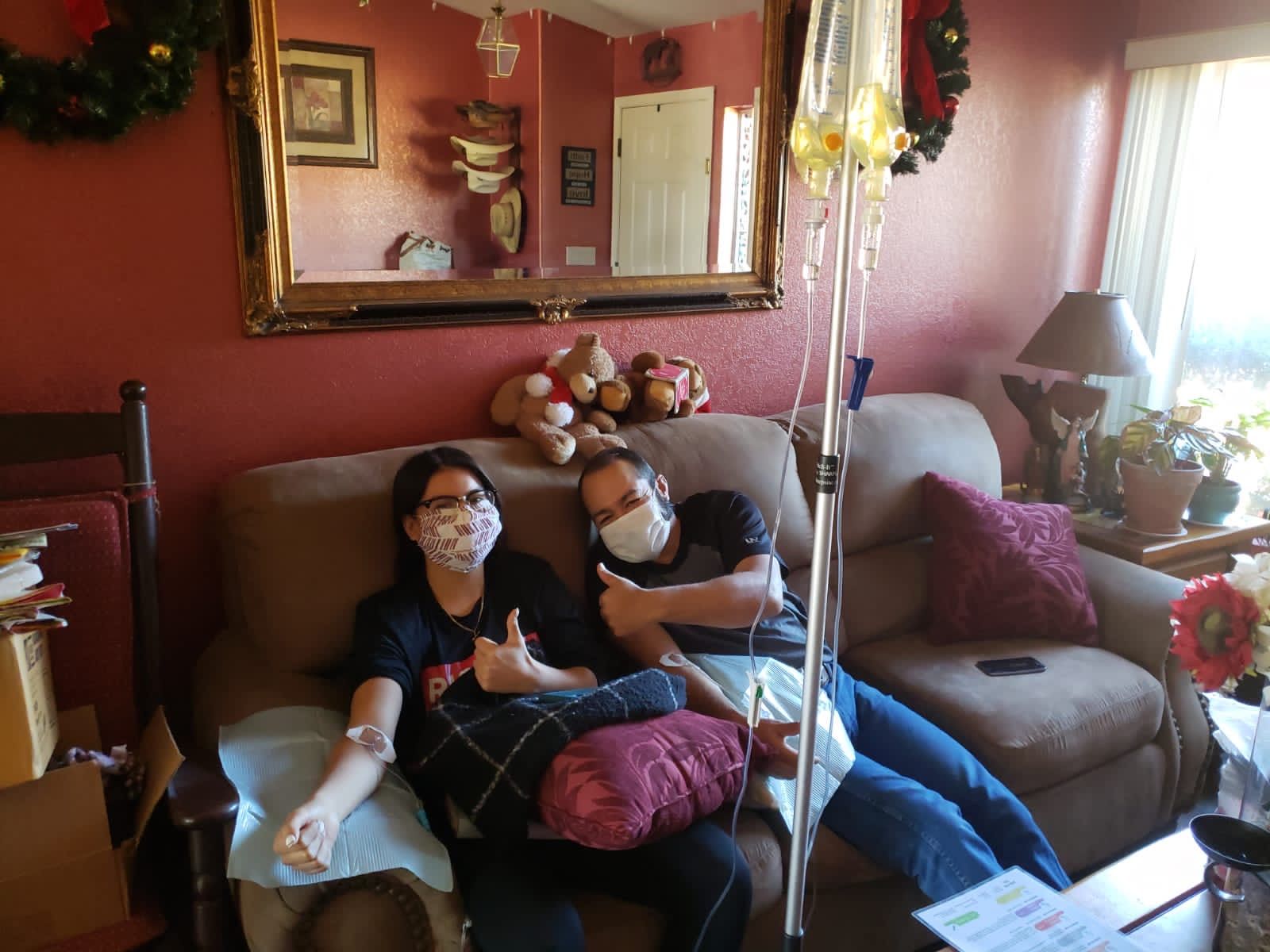IV infusion side effects are a natural concern for anyone considering intravenous therapy, whether for hydration, vitamins, or medical treatment. While IV therapy offers rapid delivery of essential nutrients and medications directly into the bloodstream, understanding potential reactions helps ensure a safe and comfortable experience. Most side effects are mild and temporary, but knowing what to watch for empowers patients to recognize when professional attention may be needed.
What Is IV Infusion Therapy?
IV infusion therapy is a medical procedure that delivers fluids, medications, vitamins, or nutrients directly into a patient's bloodstream through a vein. This method bypasses the digestive system, allowing for immediate absorption and faster therapeutic effects. Healthcare providers use
IV therapy for various purposes, including treating dehydration, administering chemotherapy, providing immune support, and delivering essential vitamins for wellness optimization.
What Are the Common Side Effects of IV Infusions?
Most patients tolerate IV therapy well, but some may experience mild reactions at the injection site or throughout their body. Understanding these common side effects helps distinguish between normal responses and situations requiring medical attention.
Injection Site Reactions
The area where the catheter enters the vein often shows minor symptoms that typically resolve within hours. Redness around the puncture site indicates localized inflammation as the body responds to the catheter insertion. Mild swelling may occur due to fluid accumulation in surrounding tissues, while slight itching results from histamine release during the healing process. Some patients notice tenderness or discomfort when touching the area, which usually diminishes as the site heals.
Systemic Symptoms
Beyond the injection site, patients may experience body-wide reactions as medications or nutrients circulate through the bloodstream. A cooling sensation often occurs as room-temperature fluids enter the warmer bloodstream, creating a temporary chill response. Some individuals develop a metallic taste in their mouth, particularly with vitamin infusions containing minerals like zinc or magnesium. Mild fatigue or drowsiness can follow treatment as the body processes and utilizes the administered substances.
What Causes Infusion-Related Reactions?
Several factors contribute to the side effects patients experience during or after IV therapy. Understanding these causes helps healthcare professionals minimize risks and optimize treatment protocols.
Medication-Specific Reactions
Different substances produce varying side effects based on their chemical properties and therapeutic mechanisms. Chemotherapy drugs often trigger
nausea, fever, or chills as they attack rapidly dividing cells. Monoclonal antibody treatments may cause infusion reactions due to their interaction with the immune system. Even vitamin IV therapy can produce symptoms if administered too rapidly or in concentrations the body struggles to process efficiently.
Administration Speed
The rate at which fluids enter the bloodstream significantly impacts symptom development. Rapid infusion can overwhelm the body's ability to regulate fluid balance, potentially causing headaches, dizziness, or breathing difficulties. Healthcare providers carefully control infusion speed based on the patient's condition, the substance being administered, and individual tolerance levels.
Individual Patient Factors
Personal health status influences reaction potential significantly. Patients with existing allergies face higher risks of developing sensitivity to IV components. Those with compromised immune systems due to autoimmune disorders or other conditions may experience amplified responses. Dehydration status, liver disease, or kidney function all affect how the body processes intravenous substances.
How Can You Minimize the Risk of Side Effects?
Proactive measures significantly reduce the likelihood and severity of IV infusion side effects. Both patients and healthcare providers play crucial roles in ensuring safe treatment delivery.
Pre-Treatment Communication
Thorough discussion with your healthcare provider establishes a foundation for safe treatment. Disclose all current medications, including over-the-counter drugs and supplements, as these may interact with IV components. Share your complete allergy history, noting previous reactions to medications, foods, or environmental triggers. Inform the registered nurse about any chronic conditions, recent illnesses, or symptoms you're currently experiencing.
Proper Hydration and Preparation
Arriving well-hydrated improves vein accessibility and helps your body process IV fluids more effectively. Eating a light meal before treatment prevents nausea and stabilizes blood sugar levels. Wearing comfortable clothing with easy arm access facilitates catheter placement and promotes relaxation during the session.
Choosing Qualified Providers
Selecting experienced healthcare professionals dramatically reduces complication risks. Licensed nurses and physicians possess the training to insert catheters properly, monitor for adverse reactions, and respond appropriately to emergencies. Reputable providers like Elevate Mobile IV Therapy employ only registered nurses who bring hospital-grade expertise directly to patients' homes or offices, ensuring professional care in comfortable settings.
What Should You Do if Side Effects Occur?
Knowing how to respond when symptoms develop ensures appropriate care and prevents complications from escalating.
During Treatment
Alert your nurse immediately if you experience any unusual symptoms during infusion. Don't dismiss seemingly minor changes like mild itching, sudden chills, or unexpected drowsiness. Healthcare providers can adjust infusion rates, administer counteracting medications, or discontinue treatment if necessary. Most reactions resolve quickly with proper intervention.
After Treatment
Monitor the injection site for increasing redness, warmth, or swelling in the hours following treatment. Some tenderness is normal, but worsening pain or visible tracking along the vein requires medical evaluation. Watch for delayed allergic reactions, which occasionally develop several hours post-treatment. Contact your healthcare provider if you develop fever, persistent cough, or breathing difficulties after receiving IV therapy.
Emergency Situations
Seek immediate medical attention for severe symptoms including chest pain, difficulty breathing, rapid heartbeat, severe rash with swelling, or signs of infection at the injection site with fever. While serious complications remain rare with proper administration, prompt response to warning signs ensures optimal outcomes.
Are Certain Patients at Higher Risk for Side Effects?
Some individuals face elevated risks for experiencing IV infusion side effects based on their health status and medical history.
Patients receiving targeted therapy for cancer treatment often experience more pronounced reactions due to the potent nature of these medications. Those undergoing chemotherapy may develop cumulative side effects with repeated treatments. Individuals with compromised immune function process medications differently, potentially leading to unexpected responses.
Pregnant women require special consideration, as certain IV components may affect both mother and developing baby. Elderly patients often metabolize medications more slowly, necessitating adjusted dosages and prolonged monitoring. People with
allergies to specific substances must ensure their treatment formulations avoid triggering ingredients.
How Does Professional IV Therapy Differ from Unregulated Services?
The expertise of administering healthcare professionals significantly impacts safety outcomes and side effect management.
Licensed registered nurses undergo extensive training in intravenous therapy techniques, sterile procedures, and emergency response protocols. They understand proper catheter insertion angles, optimal vein selection, and appropriate infusion rates for different substances. This expertise minimizes tissue damage, reduces infection risks, and ensures accurate medication delivery.
Professional services utilize pharmaceutical-grade vitamins and sterile equipment meeting medical standards. They maintain proper storage conditions for all substances and follow rigorous safety protocols. When complications arise, trained nurses recognize symptoms immediately and implement appropriate interventions, from adjusting infusion rates to administering emergency medications.
Patients seeking
mobile IV therapy benefit from the convenience of in-home treatment without sacrificing safety standards. Reputable providers bring the same medical-grade equipment and professional expertise found in clinical settings directly to patients' preferred locations.
What Are the Long-Term Considerations for Regular IV Therapy Users?
Individuals receiving frequent IV treatments, whether for medical necessity or wellness optimization, should understand potential long-term effects and maintenance strategies.
Regular catheter insertions can eventually damage vein walls, leading to scarring or reduced vein accessibility. Healthcare providers rotate injection sites to minimize cumulative trauma and preserve vein integrity. Patients receiving ongoing therapy should discuss optimal scheduling to allow adequate healing between treatments.
Monitoring blood work helps identify any developing imbalances from repeated vitamin or nutrient infusions. While generally safe, excessive supplementation of certain vitamins may accumulate in the body over time. Periodic evaluation ensures treatment protocols remain beneficial without creating new health concerns.
Building a relationship with a consistent healthcare provider allows for personalized protocol adjustments based on your response patterns. Your nurse or doctor can identify subtle changes indicating the need for modified formulations, altered infusion rates, or adjusted treatment frequencies.
Conclusion
Understanding IV infusion side effects empowers patients to make informed decisions about their healthcare while recognizing the difference between normal responses and concerning symptoms. Most reactions remain mild and temporary, resolving quickly with proper care. The key to safe IV therapy lies in choosing qualified healthcare providers, maintaining open communication, and monitoring your body's responses.






